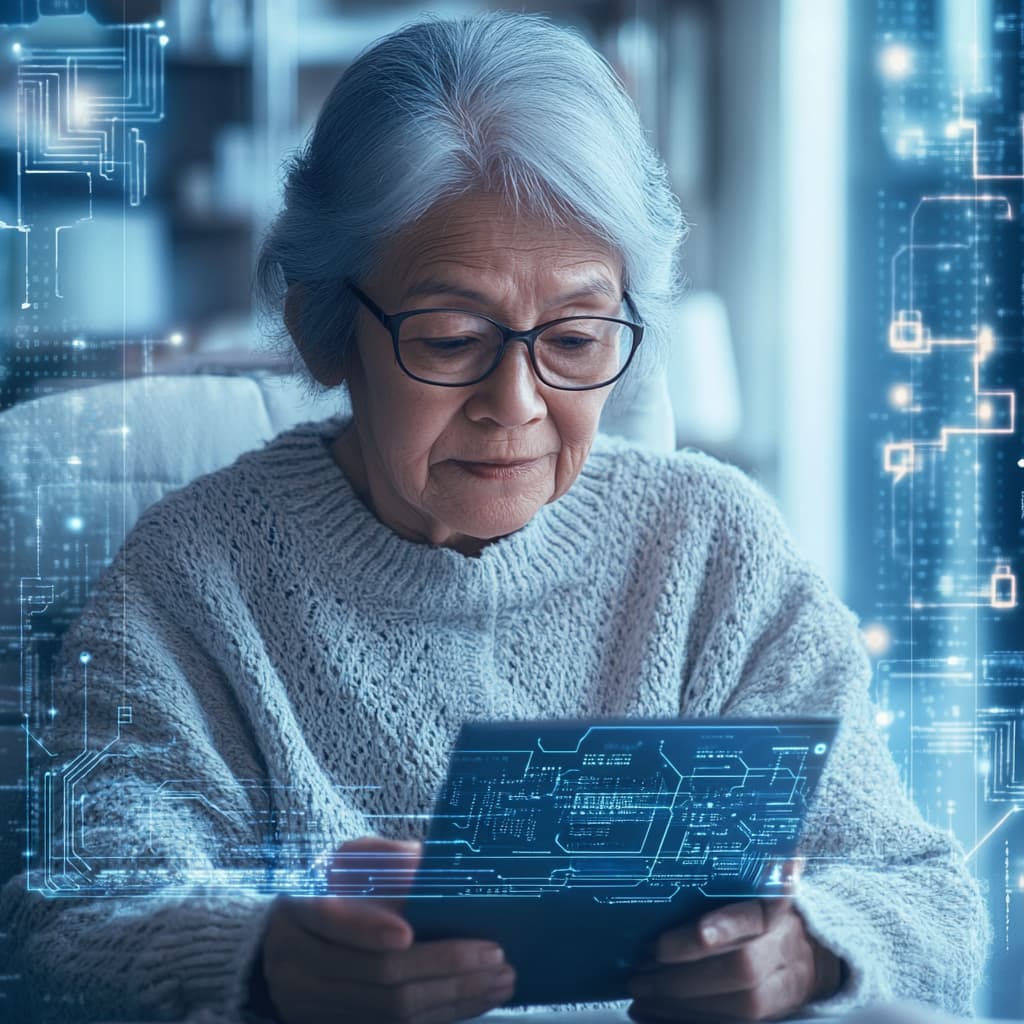
Digital Technology and the Elderly: How IT Helps Stay Connected to the World
In today’s fast-paced digital world, technology has become an integral part of daily life, influencing how we communicate, work, shop, and access information. While younger generations are often at the forefront of adopting new digital tools, older adults are increasingly engaging with technology in meaningful ways. Far from being left behind, many seniors are embracing digital innovations to stay connected, informed, and empowered.
This article explores how information technology (IT) is helping elderly people remain engaged with the world, maintain relationships, access vital services, and enhance their quality of life.
Bridging the Communication Gap
One of the most significant benefits of digital technology for seniors is improved communication. Video call platforms such as Zoom, FaceTime, and WhatsApp allow older adults to see and speak with family members and friends, even if they live on the other side of the world. Especially during the COVID-19 pandemic, when physical distancing became necessary, digital communication tools were essential in fighting loneliness and isolation.
Text messaging, email, and social media also play key roles in maintaining daily contact. For many elderly individuals, learning to use a smartphone or tablet has opened new doors to interaction, helping them maintain emotional bonds and a sense of community.
Enhancing Healthcare Access
Health and wellness are top priorities for seniors, and digital health technologies are transforming how they manage their well-being. Telemedicine, for example, allows patients to consult with doctors from home, reducing the need for stressful or difficult travel. Many health providers now offer virtual appointments, making it easier for elderly patients to receive regular check-ups or manage chronic conditions.
Wearable health devices such as smartwatches can monitor heart rate, detect falls, and remind users to take medication. These technologies offer not only convenience but also safety, giving both seniors and their caregivers peace of mind.
Additionally, health apps help seniors track fitness, nutrition, and medication schedules, promoting more active and independent lifestyles.
Access to Information and Learning
Staying mentally engaged is crucial to healthy aging, and the internet is a powerful tool for lifelong learning. Elderly individuals can now take online courses, watch educational videos, or read articles on virtually any topic that interests them. This access to information helps fight cognitive decline, keeps them intellectually active, and fosters a sense of accomplishment.
Many libraries, universities, and cultural institutions offer digital access to lectures, books, and exhibitions. Platforms like YouTube or Coursera have become popular sources of entertainment and education for seniors eager to learn something new.
Online Shopping and Services
For elderly people with limited mobility or those living in rural areas, online shopping is a game-changer. Groceries, medications, household items, and clothing can be ordered online and delivered directly to the doorstep. This not only adds convenience but also supports independence, as it reduces reliance on others for everyday errands.
Online banking, bill payments, and government services can now be accessed without leaving the house, making life simpler and safer—especially for seniors who may find travel physically challenging.
Social Inclusion and Community
Social isolation is a major concern for aging populations, but digital platforms offer ways to remain socially engaged. Online forums, hobby groups, and virtual meetups allow elderly users to connect with people who share their interests, from gardening to book clubs to religious communities.
Many seniors also enjoy participating in Facebook groups or using messaging apps like Viber or Signal to chat with friends and grandchildren. These tools help bridge generational gaps and foster a greater sense of belonging.
Overcoming the Digital Divide
Despite these benefits, challenges remain. A significant number of elderly people still lack access to devices or the internet. Others may feel overwhelmed by unfamiliar technology or worry about online scams.
To address these issues, many communities and organizations have launched digital literacy programs specifically designed for seniors. These programs teach basic computer and smartphone skills, internet safety, and how to use essential applications.
Family members also play a vital role in helping older relatives adapt to technology. Patience, encouragement, and hands-on assistance can make the learning curve feel less intimidating.
Designing with Seniors in Mind
Tech companies are increasingly recognizing the importance of designing products with elderly users in mind. Simplified interfaces, larger fonts, voice commands, and easy-to-navigate menus help make digital tools more accessible.
Some companies are developing “senior-friendly” devices with pre-installed essential apps and minimal clutter. These innovations help reduce anxiety and increase user confidence, ensuring that technology feels like a friend, not a barrier.
Real-Life Impact Stories
Countless real-life stories highlight how IT has transformed the lives of seniors. For instance, 82-year-old Grace learned to use a tablet during lockdown and now plays virtual chess with a friend in Canada every week. Thomas, 76, manages his diabetes using a smartphone app that tracks his meals and glucose levels. Maria, 70, started an online knitting club that now has members from six countries.
These stories show that age is no obstacle to digital empowerment.
The Road Ahead
As digital transformation continues to reshape the world, it is essential to ensure that seniors are included in the journey. The benefits of technology—connection, independence, safety, and education—are as relevant to older adults as to anyone else.
Governments, developers, educators, and families must work together to bridge the digital divide, offer accessible training, and design inclusive tools. In doing so, we not only improve the lives of our elders but also build a more compassionate and connected society.
Conclusion
Digital technology is not just for the young. In fact, its potential to enhance the lives of older adults is enormous. By helping seniors stay connected, informed, and independent, IT becomes a vital ally in healthy aging. With the right support and inclusive design, the digital world can truly become a place for all generations.




